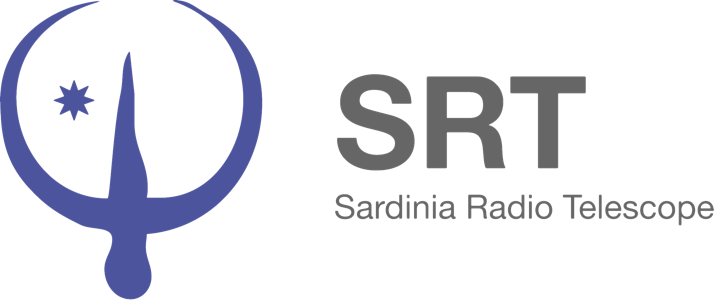Project
Receivers
One of the most advanced features of the SRT is its frequency agility, i.e. the capability to remotely and automatically switch among different receivers using several minor servo-systems. In order to maximize the efficiency of these mechanisms and the antenna’s response to different antenna focal positions, the first-light receivers were designed to cover as many foci of the antenna as possible.
The focal position and the operational frequency band of each receiver are reported in Table I.
|
Receiver |
Freq. |
Beam-size |
T-sys [K] |
|
Primary-focus L-P band dual-frequency |
305 - 410 MHz |
56.2' |
(50-80) NA |
|
1.3 - 1.8 GHz |
12.6' |
(21) 25-35 |
|
|
BWG-focus C-band mono-feed |
5.7 - 7.7 GHz |
2.8' |
(19) 32-27 |
|
Secondary-focus K-band multi-feed |
18 - 26.5 GHz |
50" |
(45 - 75) 70 - 90 |
For each receiver the frequency coverage, the beam-size in arcmin or arcsec, measurements and estimations (between brackets) of system temperature at 45 degree elevation. The system temperature is worse than expected because of unpredicted losses in the receiver cabin’s screen and probably for another source still to be identified. Concerning the next generation receiver for SRT, the front-end group has now started working on a secondary focus Q-band 19-pixel dual-polarized cryo-cooled system.
All receivers are dual-polarized, cryogenically cooled and take advantage of the latest HEMT technology. The refrigeration system is based on a two stage Gifford- McMahon cooler (20 K and 77 K) in a Helium 5.5 closed cycle system. The K-band receiver is based on a 7-pixel multi-feed configuration to improve sky map capability (beam separation is 138"). The low-frequency receiver shows an original design with a coaxial configuration to simultaneously observe both P- and L-bands. The latter is a key aspect for pulsar research, enabling astronomers to evaluate and subtract interstellar medium dispersion effects. The first receiver installed at the SRT was the C-band mono-feed receiver. Its beam size was the preferred one for testing the preliminary pointing models. This receiver was first installed in the Gregorian focus to minimize possible misalignments in the optical path. Then, it was moved to its final position in the BWG. Currently, all three microwave front-end receivers are installed on the telescope. For each receiver, the measurements of the receiver stability and system temperature, the manual pointing, the pointing model and the gain curve versus elevation have been performed.
